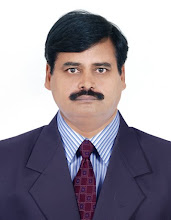Dear All
In continuation to the earlier posting made on this subject, i have submitted the Abstract for presentation in the Conference to be held during 7-8th March by NIMH at Secunderabad. It has been approved for presentation and pasted the same below for dissemination as:
.............................................................
3As
IN INSTITUTIONAL BASED EARLY IDENTIFICATION AND INTERVENTIONS FOR CWDDs –
OPPORTUNITIES WITH CBR
Lakshmi
Narayana N
Director, Geo Rehabilitation Centre
Guest Faculty – NIMH
Hyderabad.
E-mail: grcnln@gmail.com
ABSTRACT
Key words: Poverty,
Interventions, Rehabilitation, Mainstreaming, Sustainability, Availability,
Accessibility, Affordability, Scalable, Replicable.
The stage of Early Identification and
Early Intervention (EI & EI) of children with developmental disabilities
(CWDDs) is critical in the total spectrum of Disability Rehabilitation. The
delay in EI & EI results for severe consequences in all the developmental
areas and further complicates the DR with limited results. It further
complicates the prevention of disabilities in general and particularly the
secondary and tertiary prevention.
The early intervention services confined
with institutional based model have been limited by the number of early
intervention centres (EICs), poor accessibility and non affordability in
general and particularly for the targeted groups living in the rural areas. The
initiatives made by the Government and NGOs have resulted for limited reach and
left many who needs to be reached. The poor participation of parents / family members
in the intervention and its continuity at home environment has become barrier in
addition to other community barriers for mainstreaming with sustainable
solutions. Though all these initiatives concentrates for the age group of 3-6
years, the children with 0-3 years have got limited access for support from
parents as well as from the centres which complicates the process of early
identification and early interventions.
The Disability Acts which insists for
equal opportunities, protection of rights and full participation in an
inclusive environment were limited by resources, services, and its sustainability.
Further, UNCRPD and amendment of Disability Acts insists CBR for mainstreaming CWDDs
with right based strategies and interventions which are appropriate and cost
effective with better adoptability. The Censes 2012 indicates higher percentage
of PWDs which is alarming and further emphasizes for an effective early
identification and interventions to check the dynamics of disability and its
consequences on poverty & development.
CBR has got several advantages over the
IBR in terms of availability, accessibility and affordability (3As) as the
CWDDs will be reached at their home / community environment with the
participation of the parents and other stakeholders. The disability registry by
the PRI with the support of ICDS, PHC and other health workers improves the
identification as early as possible. The interventions based on CBR approach
which utilizes the local resources to the maximum extent will address the needs
of the CWDDs of 0-6 years covering health, social and pre-academics. IBR and
CBR works as complimentary to each other where the mild and moderate which
comes around 70% can be addressed at the community level leaving others for
specialized services at IBR. The initiative of moving towards Disability Free
Society (DFS) has ignited the stakeholders and more needs to be done.
.......................................................................
Looking forward for better sharing and reflections...
All the best.
Looking forward for better sharing and reflections...
All the best.





